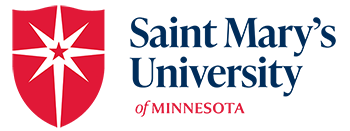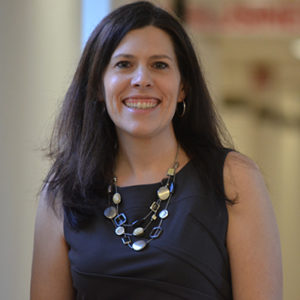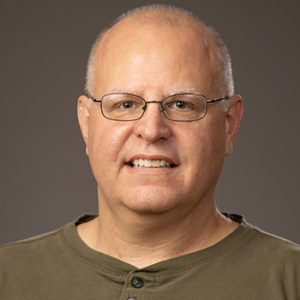Saint Mary's Newsroom / Campus Notes
Winona Campus Newsletter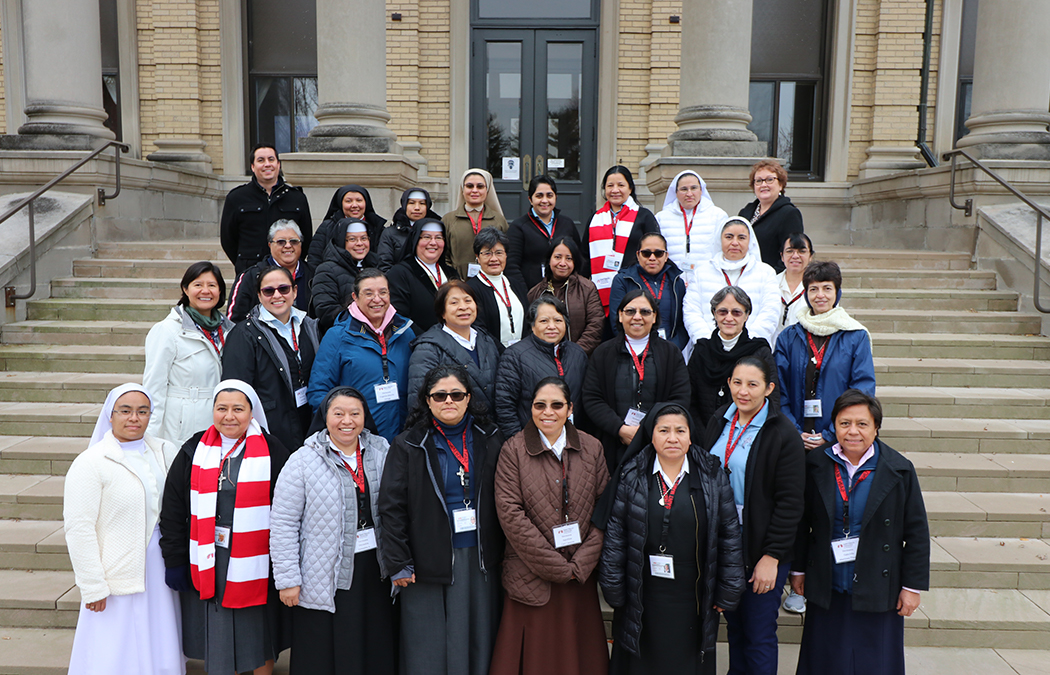
Catholic Latin American Sisters visit Winona Campus
As part of Saint Mary’s Lasallian Catholic mission, the university was excited to welcome 40 religious sisters from Latin America to its Winona Campus the week of Nov. 14.
The sisters’ visit was made possible through the U.S.-Latin American Sisters Exchange Program, a partnership between Catholic Extension and Saint Mary’s. As a part of the program, the sisters serve as missionaries in underserved Latino communities across the U.S. while also receiving degrees from Saint Mary’s University of Minnesota.
The sisters (42 total) have been enrolled in the university’s Health and Human Services programs online since 2019, with 28 of the students working toward an online bachelor’s program and 14 completing a master’s degree. Once the sisters complete their degrees, they will take their knowledge, and their newfound Lasallian charism back with them to their home countries, where they will lead and nurture their congregations.
Because of COVID-19 travel restrictions, this was the first time the sisters were able to visit Saint Mary’s. The group of enthusiastic and friendly women were welcomed with a full week of events.
The sisters completed one class, while also becoming acquainted with students, staff, and faculty. Experiencing Winona Campus life to the fullest, they enjoyed meals in the dining hall, enjoyed a mariachi band, and attended the university’s student musical variety show, Blue Angel. The sisters also celebrated Mass with Father James Burns, IVD, Ph.D, Saint Mary’s president, and the Most Rev. John Quinn, AFSC, D.D., Bishop of the Diocese of Winona-Rochester, and visited the Shrine of Our Lady of Guadalupe in La Crosse, Wis.
A fun and useful connection, the sisters interacted with students from Karen Sorvaag’s Advanced Literacy Methods course. During the meeting, the sisters pracited their English conversational skills and learned about Minnesota and the Midwest. The meeting was a kick-off to the spring semester Conversation Partner experience that the Advanced Literacy Methods students will facilitate with volunteers from the U.S.-Latin American Sisters Exchange Program. As a part of the experience, students will have the chance to practice a variety of multilingual learning strategies while the sisters will continue to practice their English skills.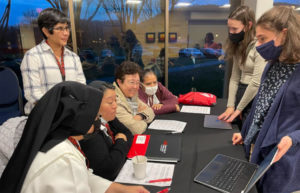
The visit also provided these women with an opportunity to learn firsthand about Lasallian traditions and values. Brother Larry Schatz, FSC, provided the sisters with a lesson on the school’s Lasallian heritage, and they also had the opportunity to share dinner with the De La Salle Chrsitian Brothers.
“The sisters were able to identify with the Lasallian charism and values, and now they can carry that on in their mission,” said Robertolino Vargas Guerrero, program director for the initiative. “Leaving Saint Mary’s, they feel more Lasallian.”
While in Minnesota, Catholic Extension also thought it was important for the sisters to visit George Floyd Square, where they prayed and sang in memory of George Floyd. Their visit to the memorial was covered by KSTP-TV and the Catholic Spirit, the official newspaper of the Archdiocese of Saint Paul and Minneapolis.
Those on campus who were able to interact with the sisters say it was rewarding, citing the excitement they felt from the sisters the moment they stepped foot on campus.
“The sisters were very upbeat, positive, and so appreciative of anything we did the whole time. They were just ecstatic of the experience. I think they inspired themselves, and they inspired us because they were so positive and wanted to know about Saint Mary’s and the culture of Minnesota,” said Susan Jarosak, who oversees the academic programs the sisters are enrolled in. “Their visit was the highlight of my year. With COVID-19 and everything else, having all these inspirational women on campus, praying, singing, and dancing, it was wonderful.”

Midwest Academy of Management by Lelna Desta
During a colorful fall weekend, the Midwest Academy of Management hosted its annual conference at St. Ambrose University in Davenport, Iowa. With the academy board deciding that “teaching and researching must continue on,” this year’s conference was hosted in-person with hybrid attendance on Zoom. The conference took place between October 14 – 16, 2021. This year’s conference was well attended by students from various programs across the nation. Ten students pursuing a Doctorate in Business Administration (DBA) attended the conference from St. Mary’s University of Minnesota, with several students receiving scholarships from the academy. The conference was also attended by Dr. Matt Nowakowski and Dr. Jennifer Schultz.
It kicked off with the Doctoral Consortium which had informative sessions on “Teaching Effectiveness” by Dr. Tim Peterson and “Research Productivity” by Dr. Monica Forret. Activities included a panel discussion and a working lunch in small groups with faculty. The day ended with the group going on the Mississippi River Cruise on a sunny fall afternoon.
During the conference, second year students, Keith Anderson, Lelna Desta, and Andrew Rhoads presented their paper titled “Fearless Whistleblowing – Backing Down the Schoolyard Bullies.” Students and professors also led and moderated six workshops and one symposium during the three day conference. Topics included:
- Teaching with the Scripted and Unscripted: Using TV and Reality TV in the Classroom
- Practitioners in the Classroom: Sharing Best Practices and Added Value
- The Diversity Grand Challenge: Myths and Legends
- Program Pride – Networking with Former Program Alumni: A Conversation Corner
- Academy of Management Ombudsperson Team: Professional Collaborations Workshop
- Considering Administrative Roles: Alternative Career Paths in Academia is One Right for You?
- Apps n Apps: Using Mobile Applications in the Business Classroom
The variety of topics covered and the ability to network with researchers and faculty members was valuable. The following two quotes were shared with attendees during the conference:
- “Creativity dwells in the mind, but one must be careful because so do the boundaries.” – Unknown [Quote shared by Dr. Tim Peterson during the “Teaching Effectiveness” Presentation]
- “It is very hard to let go of what was successful, for what you don’t know will succeed.” Dr. Michael Hitt [Keynote Speaker]
Several sessions asked attendees to reflect on one question: What do you value? […in your life, career, research, teaching, etc.]
Returning back to an in-person conference proved to be successful for the students and faculty who attended this year’s Midwest Academy of Management’s annual conference. The board announced that next year’s conference will take place in Fall of 2022 in Detroit, Michigan!
Lelna Desta
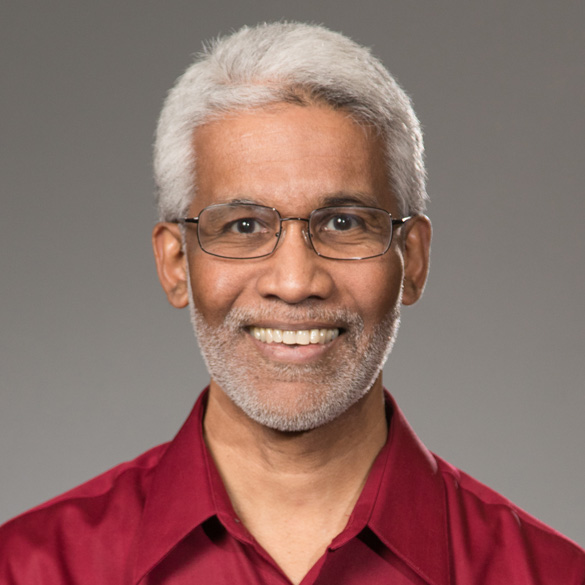
Generosity by Raj Beekie
As in my essay on silence, my first lessons on generosity came from my parents. While both parents were known for being generous in the community, it was my mother’s lesson I clearly remember, and it has guided me through the years.
When I was young, my mom, Isha, would cook lots of food at various times of the year. As a family we would visit the Alms House and share the food with the less fortunate. Preparing the many pots of food was a lot of hard work, but my mother told us it was almost a life requirement.
She got this from her father who was a Muslim. One of the tenants of Islam is Zakat. This is charity generally given to the poor or needy. My grandfather felt being generous was a duty. My mother, even though she became a Christian, retained the tenant of Zakat. While my grandfather saw Zakat as a duty, I see being generous as a way of enriching my own life and having peace of mind knowing I made life easier for another person.
I can remember after sharing the food with over 100 people many recipients would thank my mom profusely. On the drive home, my mom made the comment, “All of the people were very thankful, but ironically, I am the bigger beneficiary of the food given away.” One of us replied, “How?” My mom replied, “For starters, I feel good we were able to give some people a home cooked meal. This feeling will last for weeks, even years. However, in a few hours, the people who received the food will be hungry and the satisfied feeling they have right now will fade away. I, on the other hand, will remain satisfied. The giver is often the person who gains the most. The benefits last a lifetime.”
Medically, my mother was on to something. Feelings of goodness release endorphins in the body. These hormones trigger a better stress response, increase feeling of happiness, etc. Surprisingly, being generous has tremendous emotional wellbeing benefits. A quick Google search links being generous to:
- Lower blood pressure.
- Increased self-esteem.
- Less depression.
- Lower stress levels.
- Longer life.
- Greater happiness and satisfaction.
In the EQ class I teach, one of the 12 things I generally recommend is being generous. It does improve one’s EQ and life’s coping abilities.
People generally give when they feel good and are less likely to give if they feel stressed, unhappy, anxious, etc. Ironically, a way to overcome the negative feelings is to give. Being generous has great therapeutic benefits, but we first must overcome our desire to have more or even save/protect what we have. When the focus is on helping others, it takes the focus off the things that weigh us down. It gives us space to breathe and see things from a healthy perspective.
So, what are some of the generous things I do? I have a large garden and a community plot. Every year, I give away a lot of tomatoes, kale, collard greens, etc. In giving away the vegetables, I believe it adds in a small way to a better diet. I also help people with their gardens. At the community garden where I have a plot, I volunteer to water and help plant the gardens of other members when they are on vacation or busy doing other things.
Another thing I do is offer to pay the grocery bill for someone directly in front or behind of me in the checkout line. Surprisingly, this is much harder to do than you can imagine. Some are very thankful. However, most people have politely refused the offer. Some have looked at me suspiciously or as if I am nuts. On the seldom occasion I have received curt responses like, “No, I can pay my own bill.” I don’t know, but the overall rejection rate could also be influenced by my race, gender, accent, etc.
Even though I have had many refusals I continue to ask people every now and then when I feel moved by the spirit. The good stories allow me to continue. I will share two stories. One day, I was in Aldi’s and the lady behind me had a few bananas, oranges, beans, milk, bread, and some other things on the belt. After exchanging quick pleasantries about the weather, I asked her if it would be okay to pay her bill. I anticipated it would be less than $20. She accepted the offer and as she was leaving, she thanked me and said, “I am unemployed, and I am down to my last few dollars. This really helps. Thank you so much.”
Another story that has stayed with me happened at Cub Foods. It was a Friday, and I went to pick up a rotisserie chicken. Dinner was going to be chicken, rice, and green beans. On entering the store, a man and I approached the door simultaneously from different directions. We gave each other the cursory head nod and entered the store. Even though I only wanted a rotisserie chicken I decided to look at the fresh vegetable section. I then picked up the chicken and headed to the checkout line. As I was waiting in line, the man who I saw on entering came in line behind me. We exchanged head nods again.
As the cashier was ringing up my item, I told the man, “Give me your item.” He gave it to me, and I gave it to the cashier to add to my bill. I did not even ask him permission. This surprised me. I normally ask permission. After returning the item to the man he thanked me and left. I took a while after checking out as I carefully placed the chicken level in a bag before heading to my car. As I was leaving, the man was waiting for me outside. I must confess that my first thought was that he was going to ask me for some money. Instead, the man said, “I thanked you in the store, but I wanted to thank you again. The last few weeks have been really rough. What you did has made me feel a whole lot better. Much appreciated.”
Now, I did not pay attention to what to what I bought for him, but as soon as I got into my car, I checked the receipt. It was a box of corn muffin mix. This costs less than a dollar, yet the man was so thankful. In this case, it was not the money. It was the gesture that really matter to this man.
A mantra I have incorporated into my life is “Make life easier for the next person.” I have also shared this with our kids. Being generous with time, money, kind words, etc., all can make life easier for the next person. This sentiment is shared by many famous people.
Below are some of my favorite quotations on being generous.
Giving frees us from the familiar territory of our own needs by opening our mind to the unexplained worlds occupied by the needs of others. Barbara Bush
Service to others is the rent you pay for your room here on earth. Mohammed Ali
The simplest acts of kindness are by far more powerful than a thousand heads bowing in prayer. Mahatma Gandhi
Kindness in words creates confidence. Kindness in thinking creates profoundness. Kindness in giving creates love. Lao Tzu
No one has ever become poor by giving. Anne Frank
We all should give what we have decided in our hearts to give, not reluctantly or under compulsion, for God loves a cheerful giver. 2 Corinthians 9:7
In this world it is not what we take up, but what we give up, that makes us rich. Henry Ward Beecher
As you live your life, I encourage you to give joyfully and be generous. As my mother stated, the giver is the bigger beneficiary in the exchange process. These benefits can change the trajectory of your personal health and lead you to a path of peace, happiness, and wellbeing. It can also give others hope.
Make life easier for the next person.
Dr. Raj Beekie is an associate professor in the DBA department at Saint Mary’s University, MN. To learn more about our DBA program here is the address https://www.smumn.edu/academics/graduate/business-technology/programs/doctor-of-business-administration-dba
Whether one agrees or disagrees with the thoughts and ideas expressed, he hopes they provide a broader foundation for discussion. Dr. Beekie received his bachelor’s degree in Business Administration and Organizational Communication from Concordia College, Moorhead, MN, master’s degree in Intercultural Communication from North Dakota State University, Fargo, ND, and doctorate in Organization Development from the University of St. Thomas, Minneapolis, MN.
Dr. Beekie also consults in the areas of career coaching, leadership development, diversity, emotional intelligence, and effective communication. To offer your feedback or contact me, I can be reached at rbeekie@smumn.edu

Meet Generosity by Jennifer Schultz
Meet Generosity
She loves to watch the sunrise.
She has kind, happy eyes.
Knowing her gives your life a lift and shine.
In class, Generosity sits in the middle of the room. She is unselfish and motivated by shared goals. She puts the community needs before her own, even if it inconveniences her. She makes sure that everyone is included.
She is a great boss. Early in her career, she was mentored by Gratitude, Positivity, and Optimism. She is thoughtful and caring. She helps people flourish.
Generosity is the granddaughter to Kindness and Empathy’s neighbor. She sees and values the dignity in all people.
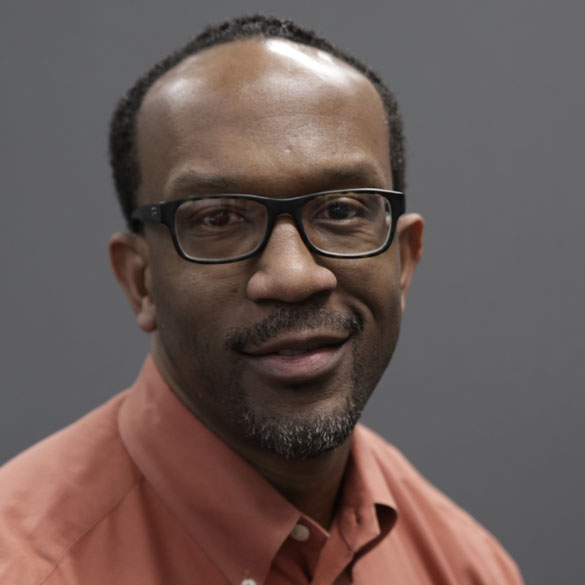
Generosity by Antar Salim
The importance of virtues have reemerged in the ethos of higher education over the past 20 years. Society in general and academia in particular have realized education is more than just the inculcation of skills and facts, but the moral development of the learner. Since the turn of the century, there has been a renewed emphasis in the literature asserting a possible correlation between moral development and human well-being. W.E.B. Du Bois famously alluded to the maxim that education is not about converting men and women into plumbers, but transforming plumbers into well-functioning men and women. In essence, higher education is at the core of imbuing virtues into the curriculum.
We currently do not have an agreed upon definition of virtues. However, some scholars, particularly those that subscribe to an Aristotelian approach to ethics will assert that a virtue is an attitude, belief and action that promotes human flourishing. For example, is generosity considered a virtue? Let’s start with a working definition. According to Brother Agathon, generosity is the act of voluntarily sacrificing one’s personal interest for the amelioration of his/her neighbor. He continues that line of thought by purporting generosity doesn’t seek what is profitable to the individual, but what benefits others. In short, generosity is predicated on self-sacrifice in order to help others. Gravid in this definition is that one does not give from a place of abundance, but from meager means.
When I reflect on the idea of generosity, I’m quickly reminded of the sacrifice of my ancestors. In my parent’s lifetime, public schools were segregated. Growing up, my parents told me stories about attending school with students and teachers that looked like them. It was hard for me to imagine such an environment, because when I went to school most of the students and teachers did not look like me. Unfortunately, this was the case for Ruby Bridges. She was a six year old African-American student who was the first to “integrate” an all-white school in New Orleans in 1960. There are copious images of this day in which four state Marshals had to escort the young person to school in order to protect her from the physical and verbal brutality of parents that could not envisage a black child sitting next to their white child. In fact, some parents removed their posterity from the school. A number of teachers even refused to perform their duties in the presence of little Rudy.
I can only begin to imagine the personal sacrifice Rudy and her parent’s made on November 14th, 1960. To abrogate one’s self-interest for the potential benefit of future generations is at the essence of generosity. In this case Rudy and her parent’s sacrificed something more precious than money, they potentially surrendered their dignity, physical well-being and public ridicule, coupled with much more in order to afford individuals like myself an opportunity to attend the public school of my choice. Generosity is truly one of the greatest virtues, as it requires us to consider the needs and interests of others. In many ways, it is diametrically opposed to the underpinnings of capitalism. Maybe if we, as a society, subscribed more to the tenets of generosity and less to profit maximization, we would be better positioned to promote human flourishing. Society would be better positioned to foster an environment in which every individual would be afforded the opportunity to reach her/his fullest potential. In sum, the virtue of generosity is the substrate of an equitable society.
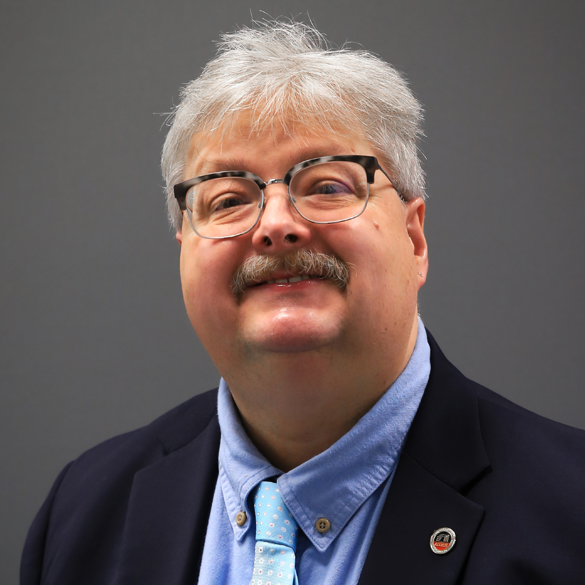
Gratitude and Generosity by Matt Nowakowski
I would like to think that gratitude and the Lasallian virtue of generosity are complementary ideas; forever linked through philosophy and application. Brother Agathon, the fifth Superior General of the Brothers of the Christian Schools (1777-1795), offers us this insight into generosity: “Generosity is a virtue that makes us voluntarily sacrifice our personal interests to those of our neighbor… (p. 85).”1 Gratitude, for the sake of this discussion, can be thought of as a quality of being thankful, as well as a willingness to show appreciation for those graces received through the efforts and sacrifice of others. Both virtues require conscience action and acceptance. For me, gratitude and generosity seem at the center of another great pair of compliments; teaching and learning.
Truth be told, you cannot really separate teaching and learning (at least that is my aspiration). For three decades I have pursued the craft of “teaching”, in what I hope was with a heart of generosity, a desire for students to “learn”, or at least to “see the world in new eyes.” Just as we hope learning will follow teaching, I think gratefulness finds its way to faculty after their work in teaching. At this point in my career, I am grateful for having followed in a noble and hallowed profession, grateful for having spent time thinking, reading, writing, and researching. Most importantly, I am grateful to have walked in association with students.
Recently, I spent time with some of our DBA students at a conference in Davenport, Iowa. We chatted, I saw them attend talks, present work, network with other faculty and students, and explore this unique piece of the world we call “academics”. We also experienced amazing Caribbean food, and had a chance to catch up on life happenings. It is in these moments that I think gratitude and generosity intersect; at inflection points where your life’s work and life’s reward are the same. Some may call these inflection points “flow”, or moments of serendipity. I like to reflect on these times with gratitude, as moments of teaching grace.
1 Brother Agathon, The twelve virtues of a good teacher and circular letter of 10 April 1786 concerning the public contests and competitions carried out at the end of the school year in different houses of his congregation, Landover, Maryland: Christian Brothers Conference, 2000.
Dr. Matt J. Nowakowski
Interim Vice Provost for Faculties and Academic Affairs
Professor
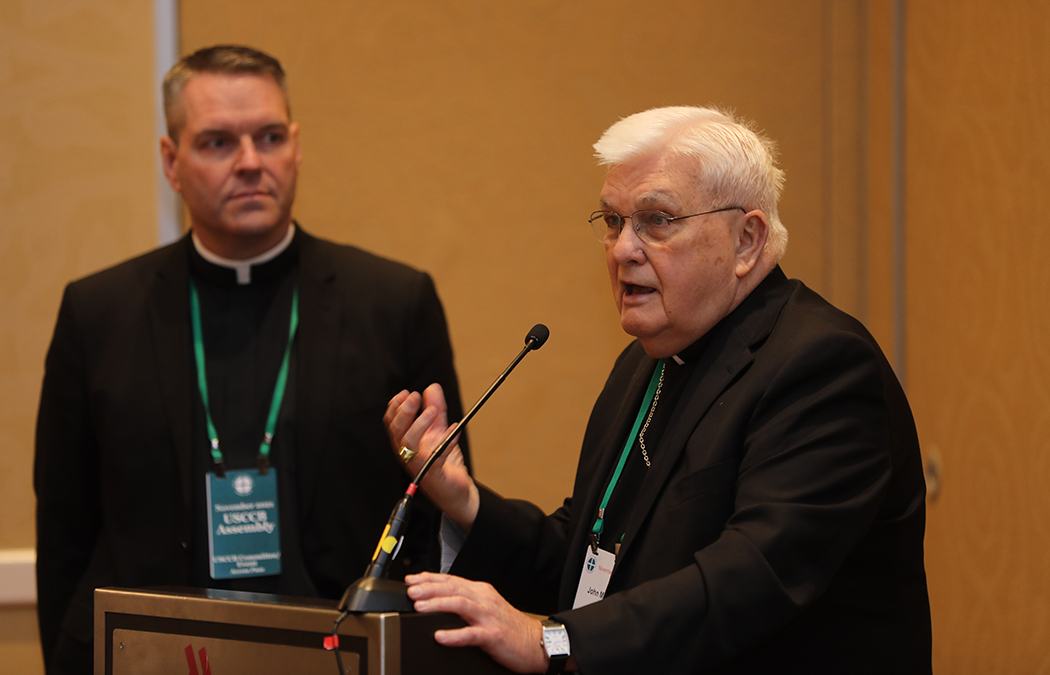
Partnership with Diocese of Winona-Rochester, an exemplar
Strong partnerships between universities and the local dioceses in which they reside can positively impact both higher education and help advance the work of the diocese. Saint Mary’s relationship with the Diocese of Winona-Rochester was highlighted at the 2021 Fall General Assembly of the United States Conference of Catholic Bishops (USCCB) earlier this month in Baltimore.
Based on the quality and strength of the partnership between Saint Mary’s University and the Diocese of Winona-Rochester, President Father James P. Burns, IVD, Ph.D., and Bishop John M. Quinn, AFSC, were paired to share some of the ways they work together to foster a positive relationship and enhance productive collaborations. The session, titled “Roles and Responsibilities of Bishops and Presidents,” was sponsored by the Higher Education Working Group of the United States Conference of Catholic Bishops. It was attended by dozens of bishops who have a university or college in their local diocese.
The two spoke of intentionality, collaboration, and communication. Bishop Quinn noted that trust is the key to a strong and affirmative relationship. He also gave examples of timely and consistent communication and proactively seeking points of collaboration. Among the many benefits of the partnership, Bishop Quinn said, “Saint Mary’s University is a great resource that strengthens the mission of the Diocese of Winona-Rochester. The university engages in collaborative ministry with local Catholic schools, health care, and lay ministry formation, which in turn helps to build up our parishes. It is a great blessing to have a Catholic university in our diocese.”
Father Burns reflected on how a college or university can be of service to the Church and how the educational mission can be expressed and enhanced by working together. He provided an example of how Saint Mary’s is impacting Catholic education through programming and scholarships directed to K-12 teachers and administrators. He also discussed the opportunity to work with clergy, religious, and laity to enhance the educational and religious experience of campus life and the ministerial efforts in the diocese. Father Burns said the session was met with positive energy. “Some attendees whom I spoke with following the sessions said the examples that Bishop Quinn and I referenced — as opportunities for collaboration and partnership — gave them hope for what could be possible in their home dioceses through invitation and intentionality.”
Saint Mary’s spotlight on Marisa Naryka
The Marketing and Communication Office will be profiling Saint Mary’s University leaders regularly in the Cardinal Update. Our goal is to showcase those overseeing and guiding key areas important to our strategic initiatives. This week, we feature Dr. Marisa Naryka, Ed.D., vice president of mission and ministry.
Name: Dr. Marisa Naryka, Ed.D.
Title: Vice President of Mission and Ministry
How long have you worked at Saint Mary’s?
I have been at Saint Mary’s for three years and nine months.
How would you describe your role at Saint Mary’s?
I am the chief mission officer charged with preserving, initiating, and inspiring active engagement in our Lasallian Catholic mission and identity. This means ensuring our mission is known, understood, and integrated into all facets of the university. It requires promoting and forming our university community in our Lasallian Catholic mission and identity, which includes Campus Ministry.
What’s your favorite part of your job?
The most enjoyable part of my job is being a witness to our Lasallian Catholic mission and identity and inviting others to join in it. I want others to be passionate about providing a human and Christian formation to our students, and accompany them in their respective roles.
What are your hopes for the future of Saint Mary’s?
I hope Saint Mary’s will be known as a premier Lasallian Catholic institution, one that authentically lives out its mission, has a vibrant community life that attracts others to join us, and alumni who are successful in their chosen fields.
What is your proudest professional accomplishment?
I redesigned our international student orientation program for an institution in the Benedictine Tradition. One of their hallmarks is hospitality. Working with the international student population, it was important to welcome them and make their first experience with the college memorable for both the students and their parents who accompanied them. The orientation began with a welcome dinner on-campus at the alumni house and featured local cuisine. It was beautiful to see how this event set the tone for the students’ experience and showed the institution’s values. This was the first time I recall consciously integrating mission into my work.
Looking at the “Declaration on the Lasallian Educational Mission,” which of the 12 declarations resonates with you the most? Why?
Declaration No. 4, which states “We believe that the educational community is a core component in the building up of the person and the transmission of values,” resonates most with me. In Ex Corde Ecclesiae, section 2, Bl. John Paul II (1990) discusses that an authentic human community is an objective of a Catholic University (n. 21). This makes sense as education and human formation happens in communities. The first community we experience and learn from is our family. As we grow, our community expands and so do our education and formation opportunities. These communities (family, school, organizations, etc.) aid us in becoming the person we are called to be, teaching us virtuous and authentic lives through our interpersonal relationships that hone and shape us, so we can find purpose and meaning in our lives. Education transforms.
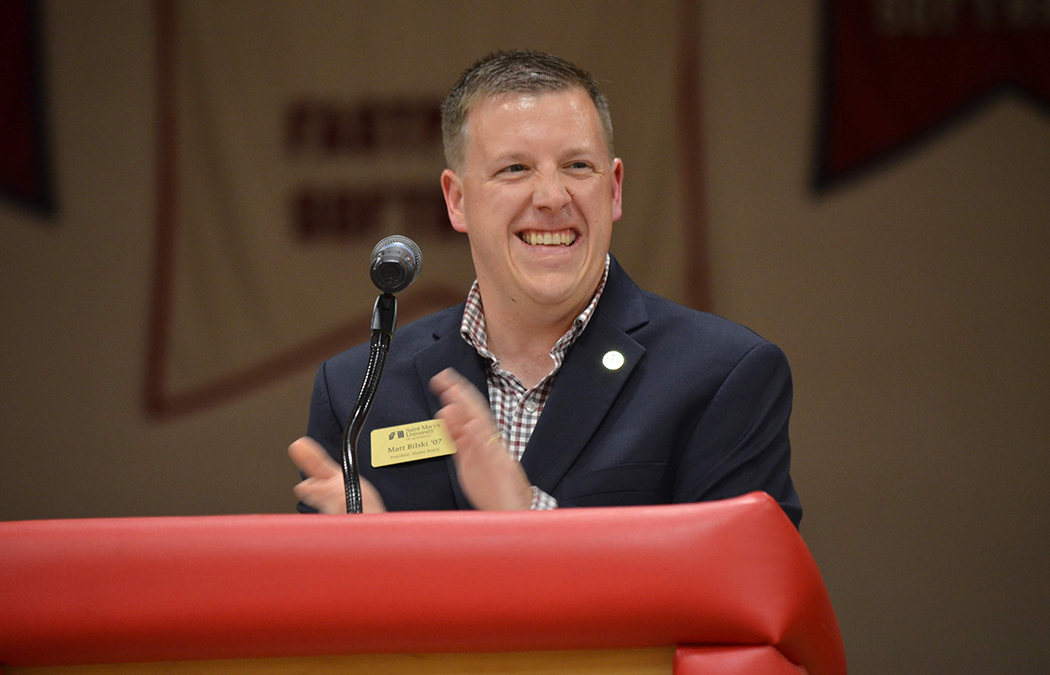
Bilski hopes to leave legacy through service
Matt Bilski ’07 originally chose Saint Mary’s because of the opportunities that existed to do undergraduate research as part of his biology degree. Working side by side with Dr. Richard Kowles, biology professor emeritus, Bilski assisted with his ongoing corn and oat genetics research, received prestigious grants, completed a summer internship, and was a contributing author on one of Dr. Kowles’ published research papers.
“Getting the experience of doing actual research at such a young age was so valuable,” he said. “It was exposure to what I began doing from day one on my job out of college.”
Bilski began working at Ecolab 14 years ago, straight out of college. Ecolab is the global leader in water, hygiene, and infection prevention solutions and services that protect people and vital resources. As lead chemist/project manager, Bilski works with new product innovation, from first-level ideation to launching the product into the market. For the past seven years, he has focused specifically on beverage and brewery customers in North America.
And Saint Mary’s, he said, helped him get where he is “100 percent.”
This is why Bilski gives back to Saint Mary’s in so many ways, including serving on the alumni board from 2015-2021 (and as president from 2018-2020) and now in a newly formed role as a young alumnus on the board of trustees.
Looking back at his and the alumni board’s accomplishments, Bilski said, a highlight was serving on the board when Father James P. Burns, IVD, Ph.D., was named president.
He is also proud of the work the alumni board made in setting clear goals and objectives and working toward them as a team, particularly in the areas of development and engagement with both graduate and undergraduate alumni. “We’ve had upwards of 30-40 people apply for open board positions. It is phenomenal that we have that much interest from those wanting to be part of the alumni board,” he said.
Representing 54,000 alumni, he said, was both rewarding and humbling. “I’m not necessarily going to see eye to eye with everyone all the time, but I hope my time on the board and as a trustee can be seen as a positive and influential voice on behalf of the alumni for Saint Mary’s now and in the future,” he said. “If, 10-20 years from now, nobody remembers I was on the board, but the things we tried to do are still going strong, that to me would be the ultimate legacy.”
One of the best parts about being on the alumni board, Bilski said, was the opportunity to be more involved with the university on a deeper level and re-connecting with faculty and staff, as well as meeting new employees.
He looks forward to further building those relationships on the board of trustees, and he’ll bring new insight to the board as someone who can relate well with the university’s graduate students, who are often balancing families and careers.
“I hope I can bring a voice, especially for the young alumni,” he said. “The trustees are more experienced in their careers. I have three young children, and my wife and I are still in the early middle stages of our careers. I may bring a different perspective to the discussions, and I look forward to working with them.”
He and his wife Jocelyn also generously support Cardinal Athletics, the Saint Mary’s Fund, and the Science Initiative.
“On the alumni board, our passion project is the annual fund, which isn’t exciting but it’s important, and it allows for so many things to happen,” he said. “And the new addition to Aquinas Hall (which now encompasses the former Adducci Science Center and the former Science and Learning Center) continues to expand research opportunities for students across disciplines.
“This mirrors many industries today and is a crucial connection I am thrilled to see being embraced by Saint Mary’s,” he said. “I think the direction the university is going with the deliberate merging of the sciences and business together is such a great idea. It
is such a smart way to look at the future.”
Bilski’s position is a prime example of this pairing. At Ecolab, he said 60-70% of his work is more business-related and 30-40% is a science research role. “Most people with biology degrees are going to end up doing something in the private sector with a publicly-traded company. Having that understanding of business and technology and how those things come together and getting exposed to that at such a young age is so beneficial.
“I look back very fondly on my time at Saint Mary’s,” he added. “I think a big part of who I am today is because of the experiences I had there. I want those students there now to have similar experiences. My family has always been very philanthropic, so I grew up in that environment. When I find organizations that have benefitted me and that I believe in strongly, I want to support that. College is expensive, and I really value the Lasallian Catholic nature of the university. The ethical and moral components students receive as part of the Lasallian education are beneficial for students as both individuals and in their professional careers.
“At Saint Mary’s, you learn a specific skill but also what type of person you want to be.”
Faculty Spotlight: Jeff Knopf
When we asked our longtime professor, Jeff Knopf, what he loves most about teaching in our MBA program, he said he enjoys how interacting with students of diverse backgrounds, learning styles and interests in GIS has taught him adaptability and made him a better educator. Let’s dive in to learn more about Jeff’s professional experience, hobbies, and more.
How long have you been teaching at Saint Mary’s?
I have assisted with the graduate program in GIS for around 19 years.
What courses do you teach for Saint Mary’s?
I teach Basics of Remote Sensing and Image Classification.
Please share a little bit about your professional experience.
I got my start in GIS, geographic information systems, and teaching at the University of North Dakota working as a remote sensing technician analyzing satellite data for precision agriculture. I came to Saint Mary’s to continue my education in GIS and have been fortunate to continue being active in the graduate program, helping with teaching in areas of my expertise, tutoring students, assisting students with projects and job placement in the GIS field. I also work for the university as a GIS Analyst on several different projects from hydrography and wetland mapping to watershed analysis.
What is your favorite quote?
“For it is in giving that we receive.” – Saint Francis
What are some of your hobbies?
In my free time, I enjoy working on cars, community service, hiking, and activities with my family and friends.
What is your favorite classroom assignment and why?
Any assignment that pushes my students’ skills and better prepares them for the job market.
What is your contact information?
Email: jknopf@smumn.edu

Kuhns fuel Cardinals for competition
Nick ’07 and Marie (Fay) ’05 Kuhn have built their business around building community.
They know that so often friendships are celebrated and strengthened by breaking bread together. This is especially true considering the number of breadsticks they’ve served to the Saint Mary’s baseball team.
The Kuhns say they are both huge sports fans and are maybe a bit biased for the Cardinals, as Nick played outfield and catcher on the team alongside current coach Nick Winecke ’07.
They’re also big fans of Saint Mary’s. Marie studied public relations, while Nick majored in management and entrepreneurship. They met at Saint Mary’s and even got married on campus.
And now, after following their dreams and opening NorthEnd Pub & Grill in Cochrane, Wis., they are finding ways to give back to the place that brought them together.
For starters, they’ve sponsored a locker in the new baseball clubhouse and catered several meals for the team, particularly during breaks when the team is still on campus. They served the team a meal, in kind, this past year as a congratulations and in preparation before their NCAA tournament.
“They are always there to help,” Winecke said. “They’re just great people. They’ve worked really hard to run their business and have great clientele. They love to give back, and they’re everything that’s good about Saint Mary’s.”
Winecke is not only a fan of the Kuhns, he’s also a fan of their food, including burgers, pizzas, paninis, or wings. He says the couple has fed the baseball team a taco bar, pastas, grilled chicken, and ribs — food that spoils them for regular cafeteria food.
And, Winecke adds, he isn’t always the best at giving them advance notice in feeding his team of more than 50. “About a day and a half at the most,” Nick Kuhn responds with a laugh.
The Kuhns say it’s amazing to watch their food be consumed so quickly and with such appreciation. At one point, Marie Kuhn remembers going through an entire case of 300 breadsticks.
Why do they give back? Marie Kuhn answers simply, “We really just love it. We love being able to do those things. We love to be helpful to Coach Winecke whenever we can do something for him because he’s such a good friend. That program was really important to where we are today. Every stepping stone is important. We both love baseball, too.”
“The baseball team, they treat you like you’re one of them, even 15-20 years later,” Nick Kuhn adds. “They bring our son, Connor, who is 7, out on the field and play catch with him. They treat him like their little brother. He’s been going to games since he was born.”
When Nick Kuhn thinks back on his time on the baseball team, he thinks of memories from the locker room, practices, and long trips — of friendships you never forget. Some teammates have worked at the restaurant part time. “Being from Chicago, I didn’t know anyone when I got there,” he said. “I never left. Nick (Winecke) hired me as an assistant one year and I was a junior varsity coach one year. I stayed in the area until I migrated here.”
The two have also come back to speak with Saint Mary’s entrepreneurship students about tips for starting their own businesses.
“It can be done,” Nick Kuhn said. “We built this from the ground level up. You need to work hard, but it’s rewarding to be able to tell them that it can be done.”
When they started the restaurant, Marie Kuhn said they started with a blank canvas. They knew they wanted to have a sports bar, but they invited the community to help mold the business into what they needed it to be. “They have welcomed us wholeheartedly,” she said. “It’s really great to be part of a small town and give back with things like T-ball Chicken Qs. People really appreciate you. And it’s rewarding when people choose to spend their time with us.”
Nick Kuhn adds, “It’s full circle; we cater everything from baptisms to funerals.”
The two especially love when recognizable Saint Mary’s faculty, staff, or alumni drop by. And they do their best to promote the university whenever they can.
“At Saint Mary’s, I primarily remember the community feel,” Marie Kuhn said. “I remember feeling people really cared about you. On a small campus, you knew everybody. I just loved my experience. We’re really proud that we are alumni.
“Every time we see an alum or someone from school in the pub, we do feel special,” she added. “When I see a Saint Mary’s T-shirt, I love to ask. There’s always a connection. It’s a family, and people love to share.”
UPPC announces new, closing, and revised programs for 2022-23 academic year and beyond
The University Program Planning Committee (UPPC), met on Nov. 3, 2021 to consider available university resources and opportunities related to current and proposed programs. At the meeting, the UPPC reviewed recommendations from the school deans, operational units, and curriculum committees regarding new, closing, and revised programs for the 2022-23 academic year and beyond.
Based on the data-informed discussions and UPPC recommendations, the provost approves the following program launches, redevelopments, closures, and initiatives.
The following new programs are approved to begin in Fall 2022/ Spring 2023/ Summer 2023:
- Natural Resources Management Minor (at College; Fall 2022)
- Graduate Certificate in Accounting (Fall 2022)
- Graduate Certificate in Organizational and Change Leadership (Fall 2022)
- Graduate Certificate in Individual and Team Leadership (Fall 2022)
- Nurse Anesthesia Children’s Hospital Pediatric Fellowship (Spring 2023)
- M.A. in Philanthropy and Development (Summer 2023)
The following new programs are approved to begin in Fall 2023/ Spring 2024:
- M.S. in Management (4+1)
- M.S. in Computer Science
The following existing programs are approved for redevelopment for Fall 2022:
- M.S. in Data Intelligence & GeoAnalytics (DIGA) — from blended to online delivery
- B.S. in Healthcare and Human Services Management (HHSM) — name change to B.S. in Healthcare Management and move to full online delivery.
In addition to these new and redeveloping programs, the UPPC also discussed the following academic initiatives, which will continue to be explored by relevant stakeholders:
- B.S. Completion Certificates
- Micro credential in Entrepreneurship
- B.S. pathways to MBA./ other Business Graduate Programs
- Ed.S. program in Kuwait
The following degrees and programs will begin the pausing or closing process, overseen by the appropriate school dean:
- M.S. in Nurse Anesthesia closure (approved by the Provost in October 2021, in response to the launch of the DNP program).
- PAUSE admissions — Bachelor Completion in Public Health
- Entrepreneurship Major (at College)
- Graduate Certificate in International Development
- PAUSE admissions — K-12 Reading Certificate
- Human Services major was discussed; future decisions are pending curriculum committee review this semester
The following department and program name changes are approved (Fall 2022):
- “Environmental Biology” major (at College) will now be the “Environmental Biology and Conservation” major.
- B.S. in Healthcare and Human Services Management (HHSM) — name change to B.S. in Healthcare Management
As a reminder, the UPPC, constituted in 2019, consists of academic and administrative leaders from across the university. The committee meets for regular consideration of programmatic decisions to maintain vibrant, relevant, and marketable programs in alignment with the goals in our strategic plan, while focusing on student outcomes and market needs. More about the UPPC, its role and its membership, is available here.
Please direct any questions you have to the appropriate school dean.
Saint Mary’s spotlight on Michael Lovorn
The Marketing and Communication Office will be profiling Saint Mary’s University leaders regularly in the Cardinal Update. Our goal is to showcase those overseeing and guiding key areas important to our strategic initiatives. This week, we feature Michael Lovorn, Ph.D., dean of the School of Education.
Name: Michael Lovorn
Title: Dean of the School of Education
How long have you worked at Saint Mary’s?
I have been with Saint Mary’s and the School of Educations for about eight months.
How would you describe your role at Saint Mary’s?
The School of Education has a current enrollment of about 1,300 students across 10 programs. As dean of education, my role includes providing leadership and advocacy for these programs; envisioning technological and curricular innovations; ensuring our student-centered, Lasallian learning environment; supporting our expert faculty and staff as they engage in high-level teaching, research, and service; and effectively stewarding our school’s resources.
What’s your favorite part of your job?
Without a doubt, my favorite part of this job is working with talented faculty and staff as they provide our students with invaluable learning and professional advancement opportunities. Saint Mary’s University School of Education alumni change our world for the better every day. In large part, this is a credit to our student-centered faculty and staff.
What are your hopes for the future of Saint Mary’s?
I have many hopes for the School of Education and Saint Mary’s. Notably, my immediate hope is that we continue to emerge from the pandemic by making positive gains in enrollment and student services. I also hope we continue distinguishing ourselves from peer institutions by remaining agile and prominent in the field, thinking creatively about Lasallian education, promoting life-changing programs, and pursuing innovation. Longer range hopes include growing the School of Education footprint to include international programs.
What is your proudest professional accomplishment?
I have two answers to this question. First, I am perpetually proud of the fact that, for over 15 years now, I have been actively engaged in teacher preparation and education research. Schools of education provide indispensable services to communities across this country and beyond, and I am proud to have been a small part of such an essential process. Second, I can’t help but express how proud I (STILL) am to be the first person in my family to attend college. Even more so, I am proud of the fact that my daughters followed in my footsteps. Today, Aubrey (26) is a fifth-grade teacher, and Kelly (25) is a social worker, noble careers. Yes, I’m a proud dad.
Looking at the “Declaration on the Lasallian Educational Mission,” which of the 12 declarations resonates with you the most? Why?
Each of these declarations resonates with me in some compelling way, but as I complete this survey, my thoughts are immediately drawn to #6: “We believe that education makes possible the search for and transmission of the truth.” My life continues to be marked in no small part by a personal quest for truth. Of course, I attribute this often humbling enterprise to education, and believe this may be one of the greatest life lessons we can pass along to our students.
